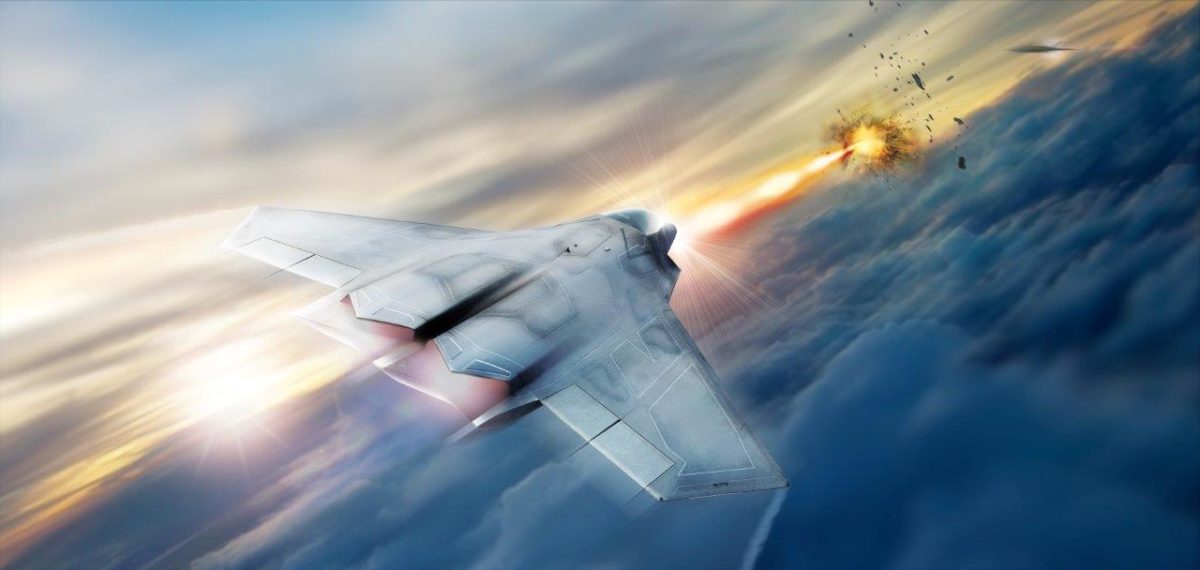U.S. Air Force seeks laser, microwave weapons for aircraft
By Tom Risen|November 1, 2018
A flight experiment in fiscal 2020 would test airborne laser and microwave weapons for defense and offense
Over the next month, directed energy companies from the U.S. and abroad will be crafting ideas to solve one of the U.S. Air Force’s greatest ongoing challenges: How to protect its aircraft from increasingly high-performance surface-to-air and air-to-air missiles.
In theory, a pilot could trust lasers or perhaps microwave emitters carried by his or her aircraft to defend the plane or perhaps those around it from missiles at “pennies per kill,” as John Patterson, a spokesman for directed energy developer Raytheon put it to me. “If you have a power source you have a virtually unlimited magazine,” he said.
To date, the U.S. has not put a laser or microwave weapon on an aircraft as a defensive countermeasure during operations. So, the U.S. Air Force Research Laboratory on Oct. 25 published a request for information seeking ideas for “Directed Energy on an Airborne Platform,” meaning laser or microwave weapons that might also have the ability to “precisely attack ground targets” while defending against “surface-to-air missiles and air-to-air missiles.” The request mentions that responses could also determine the viability of directed energy weapons for possible “base defense against cruise missile systems.”
Responses are due by Nov. 30 to help AFRL plan for a directed energy weapon experiment in fiscal 2020 that could lead to future contracts.
A variety of aircraft are being considered as potential carriers for directed energy weapons during that AFRL experiment, said Michael Jirjis, the Air Force’s chief of directed energy experimentation.
Size and weight will be challenges, Jirjis said, because directed energy designs submitted to AFRL must include both an electrical power source and a means to keep it from overheating. That means planes larger than a fighter such as “a C-130-like platform seem to offer the best option at the moment for offense and defense,” Jirjis said of the military transport plane.
The few details about aircraft in the request include that a directed energy weapon should be capable of “wingman defense” to destroy missiles attacking nearby planes. It also requires the ability to search for targets with command and control data.
If possible, AFRL wants those weapons to autonomously aim and fire at multiple ground and air targets.
The request refers to lasers but also microwave weapons that could short out electronics including those on unmanned aircraft.
AFRL is considering whether ground-based directed energy weapons could be adapted to meet its needs. Raytheon’s ground-based lasers and microwave weapons, for instance, could possibly defend military bases from attacks by swarms of small, inexpensive drones carrying explosives.
Raytheon said it participated in a demonstration of its ground-based microwave emitters and lasers hosted this month by the Air Force at the U.S. Army’s White Sands Missile Range in New Mexico. AFRL did not provide details about the demonstration or confirm if multiple companies demonstrated weapons.
Raytheon and Lockheed Martin would not say if they would respond to ARFL’s request for information related to the proposed fiscal 2020 flight experiment.
AFRL in November 2017 awarded a $26 million contract to Lockheed Martin to develop a high-power fiber laser to test on a fighter plane by 2021 as part of the Self-protect High Energy Laser Demonstrator program. AFRL’s contract office said Lockheed Martin’s contract is not related to the experiment being planned for fiscal 2020.





